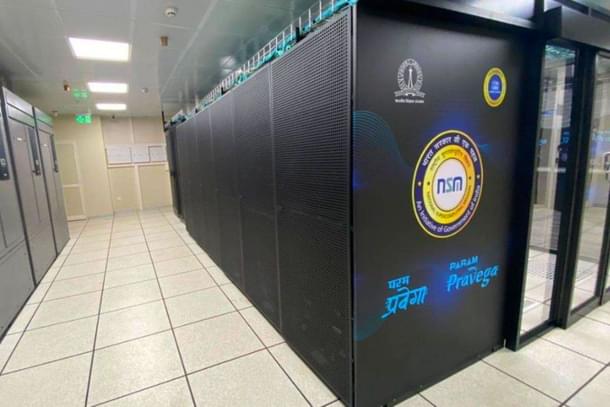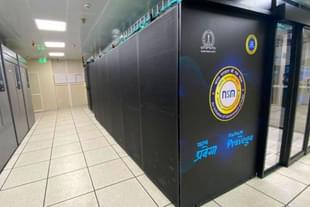Technology
IISc Beefs Up Its Supercomputing Muscle With C-DAC Developed Param Pravega
Anand Parthasarathy
Feb 05, 2022, 12:23 PM | Updated 12:23 PM IST
Save & read from anywhere!
Bookmark stories for easy access on any device or the Swarajya app.


The Indian Institute of Science in Bengaluru, which houses the Supercomputer Education and Research Centre (SERC) has for over a decade remained the nation’s premier facility for work that demands high performance computing.
But its key platform – SahasraT – a Cray CX40 supercomputer which clocked 901.5 teraflops (one teraflop is 1 trillion floating point operations per second) was soon out performed by other Cray systems acquired by the Indian Institute of Tropical Meteorology (IITM) Pune and the National Centre for Medium Range Weather Forecasting (NCMRWF) Delhi. And IISc has not figured in the world’s Top500 ranking of the fastest supercomputers since 2017.
Now, it may re-enter the next ranking in July: on Thursday (3 February), IISc announced the commissioning of a new supercomputer, under the umbrella of the National Supercomputing Mission: Param Pravega is part of the Param series of high performance computers (HPCs), designed by the Centre for Development of Advanced Computing (C-DAC) headquartered in Pune.
Pravega has a top computing speed of 3.3 petaflops (or 3,300 tera flops), which makes it between three and four times faster than the ageing SahasraT. The hardware has at its core, an Atos Bull Sequana XH2000 system from France, with processors from Intel and graphic processors from NVIDIA, both American makers. The system integration and software is the work of Indian engineers at C-DAC.
'Buy and build'
Indeed this has been the model ever since the NSM was recast in 2014, with a new ‘buy-and-build’ approach, where most of the hardware would initially be sourced from a leading global maker (currently Atos-Bull), in a knocked-down condition, with manufacture progressively shifting to a nodal Indian agency (C-DAC) which would design and configure the systems with indigenous software built on a version of the Open Source Linux programming language.
It was a sort of pragmatic Atmanirbhar Bharat-in-stages. Some ten such systems with combined Indian and foreign DNA have been installed, mostly at IITs and other academic institutions.
Fastest Indian computer
Interestingly, the SERC at IISc, in its latest acquisition, has not opted for the fastest Param platform realised so far. That is the Param Siddhi-AI which clocks 4.619 petaflops and is currently the fastest computer working in India. It is housed at C-DAC and at the last semi-annual compilation of the world’s Top 500 supercomputers, in November 2021, attained a ranking of 102.
IISc has a reputation for gainfully harnessing the supercomputing clout it commands in down-to-earth applications. It has deployed SahasraT to model viral diseases in the fight against Covid-19, develop green energy technologies and study climate change.
The added computational muscle of Param Pravega can be expected to further accelerate its work in societally meaningful and nationally important tasks.
And they are wasting no time: their website has already opened the new supercomputer, for taking bookings from registered users for new tasks, living up to its name: Pravega, great speed.
Technical details of Param Pravega at IISc can be read here.
Anand Parthasarathy is managing director at Online India Tech Pvt Ltd and a veteran IT journalist who has written about the Indian technology landscape for more than 15 years for The Hindu.





